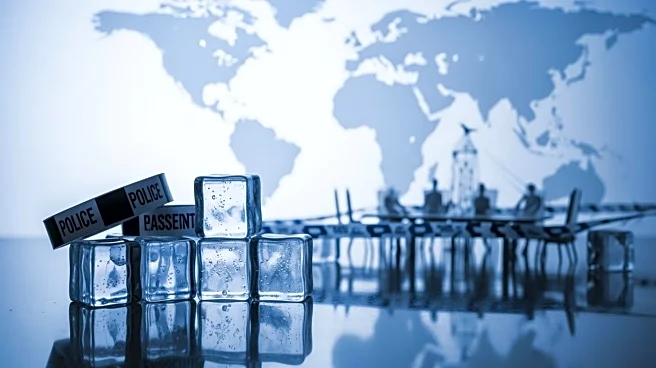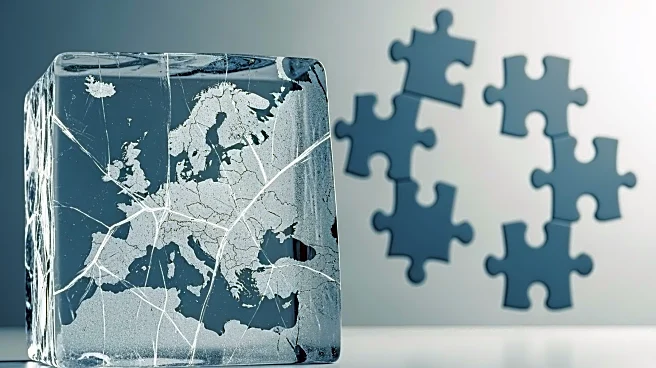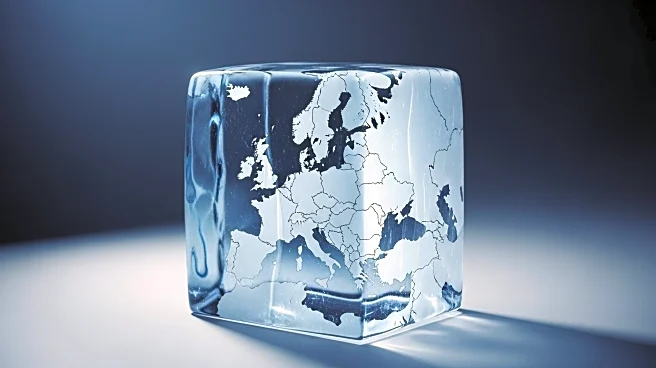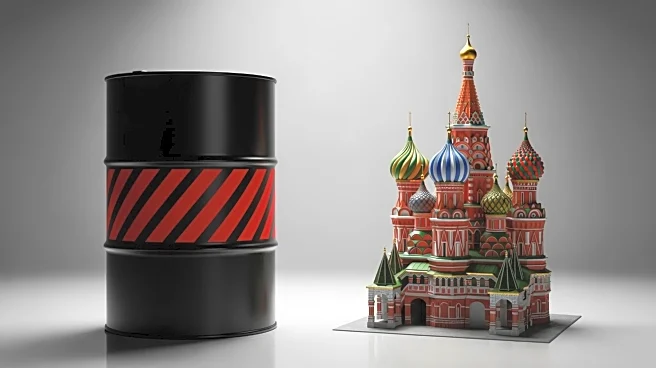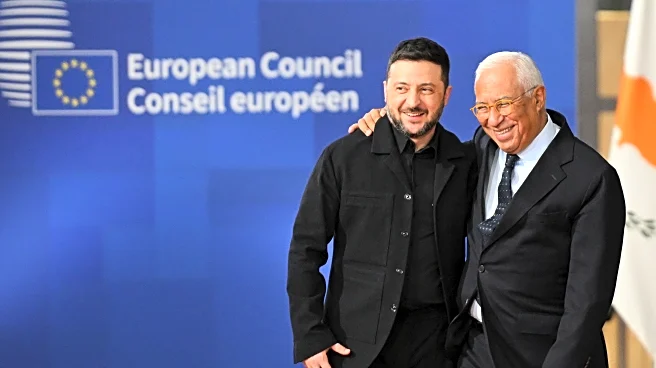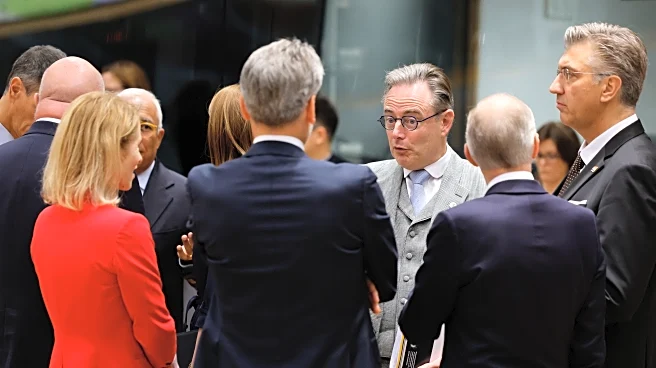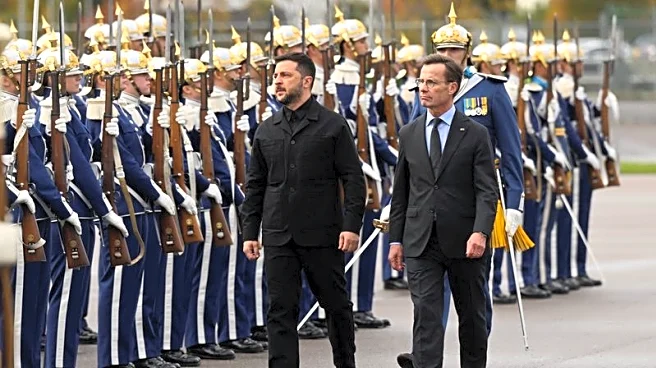What's Happening?
The Group of Seven (G7) nations, including the United States, and the European Union (EU) are considering a financial strategy to support Ukraine amidst its ongoing conflict with Russia. The EU has frozen
approximately $300 billion in Russian monetary assets, with $200 billion located in Belgium. These assets were frozen following Russia's full-scale invasion of Ukraine in February 2022. The EU and G7 have proposed using these frozen assets as collateral for a $160 billion loan to Ukraine, which would be interest-free and cover Ukraine's war budget for two years. This plan coincides with new sanctions announced by the EU and the U.S. against Russia, marking the first such action during President Trump's current term. The sanctions target major Russian oil companies, Lukoil and Rosneft, aiming to impact Russia's economy significantly.
Why It's Important?
The proposed use of frozen Russian assets represents a significant financial maneuver that could bolster Ukraine's defense capabilities. By leveraging these assets, the EU and G7 aim to provide substantial financial support to Ukraine without directly depleting their own resources. This move also sends a strong message to Russia about the international community's stance on its actions in Ukraine. For the EU, this strategy is crucial as it faces an existential threat from the conflict, and with perceived reduced U.S. involvement, Europe is taking a more decisive role. However, the plan is controversial, as it could set a precedent for the seizure of foreign assets, potentially affecting international financial stability and investor confidence in European markets.
What's Next?
The EU and G7's plan to use frozen Russian assets is still under consideration, with potential legal and financial implications being evaluated. The decision to proceed with this strategy could lead to further diplomatic tensions with Russia and may require additional coordination with international financial institutions. Stakeholders, including EU member states and financial markets, will be closely monitoring the situation. The outcome of this plan could influence future international financial policies and the handling of frozen assets in geopolitical conflicts.
Beyond the Headlines
The ethical and legal dimensions of using frozen assets for war financing are complex. This approach challenges traditional norms of asset protection and could lead to broader discussions on international law and the rights of nations to seize foreign assets. Additionally, the move could influence future geopolitical strategies, as countries may reconsider their financial engagements and asset placements in foreign territories to mitigate risks of similar actions.
